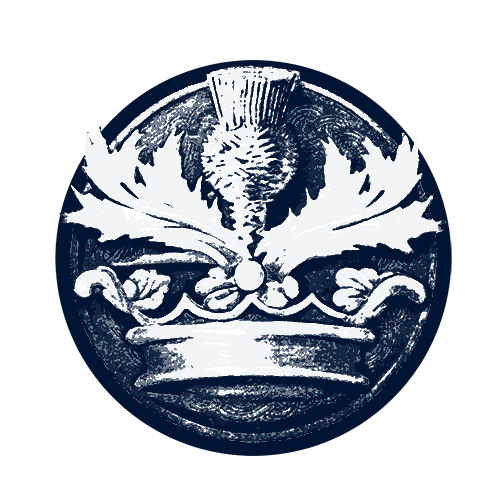Father Bain was the parish priest for Castle Leoch and the village of Cranesmuir.
Events of the Novels
Outlander
Claire first sees Father Bain when the man leads a young boy out into the village square to be punished for stealing. When Geillis Duncan convinces her husband, the procurator fiscal, to lighten the boy's sentence, Claire notes that Father Bain appears displeased.
Months later, Claire encounters the priest again when he is fleeing a pack of dogs, who set upon him after he trips and falls. Jamie drives them away, but not before one of them has bitten Father Bain's leg. Claire offers to tend to the wounds, warning that they will fester if left untreated, but the priest takes extreme offense at the notion of letting a woman handle his "pairsonal parts", and limps away.
During the witch trial brought against Claire and Geillis, Father Bain testifies against Claire, recounting the dogs' attack as a deliberate, malicious act brought against him, and reinterpreting Claire's warning of infection as a witch's curse. Claire, upon seeing the dire state of the man's leg, confirms that he will surely die of blood poisoning if the wounds remain untended, and the priest uses her words as further evidence against her.
Events in the TV Series
The Way Out
Father Bain is called upon to exorcise demons from a young boy. Claire recognizes the boy's symptoms as the result of a bodily illness, rather than a spiritual one, but the priest demands that she leave. Later, Claire returns with an antidote and cures the boy, but rather than be glad that the boy has survived, Father Bain is displeased that he has been outdone by a woman, a sassenach, and warns that "Satan may like to make a fool of God, but God will have the last word."
The Devil's Mark
Father Bain seemingly admits that Claire was able to save the boy, whereas he had failed. However, when he declares himself unworthy to serve God and asks to be let go, the people interpret his admission as proof that only Satan himself, through Claire, could "drive a man of God away." Just as he knew they would, too; when the mob begins to scream "Witch!" and "Burn her!", the priest smiles triumphantly at Claire, having seemingly delivered the last word on the matter.
Personality
While Father Bain dutifully attended to his parishioners' spiritual requirements, such as sermonizing in church on Sundays and offering last rites to the dying, he also displayed a thirst for justice in the form of punishment. For instance, in the case of a boy caught stealing food, he was quick to demand mutilation as the boy's punishment, rather than take mercy on a hungry child. Later, when Claire offered to treat the priest's wounded leg, he immediately saw a temptress trying to lure him away into immorality, rather than a healer offering help. Father Bain was the sort of man to take his religious responsibilities and retool them into God-given rights to save or condemn; anyone who should try to encroach on these exclusive powers should be met with suspicion at best, and hostility at worst.
Physical Appearance
In the book, Father Bain is described as stocky and tubby, with a brown face that "at the best of times [...] resembled a clenched fist."[2]
Name
- Bain has multiple possible origins and meanings. The Scottish surname is derived from a nickname for a person with fair-hair. This name is derived from the Scottish Gaelic bàn, meaning "white", "fair".[3]
TV Series
English actor Tim McInnerny portrays Father Bain in the Outlander television adaptation.
Appearances
References
- ↑ Voyager, chapter 60: Geillis Duncan describes the experience of witnessing her own execution, and confirms that Father Bain had died from the infected dog bite on his leg three months before she was meant to be burned as a witch. In Outlander, Dougal MacKenzie tells Claire in late December that Geillis had given birth, placing the priest's death shortly after Claire escaped the witch trial in late October 1743.
- ↑ Outlander, chapter 24
- ↑ Bain (surname) - accessed 19 June 2016 via Wikipedia
